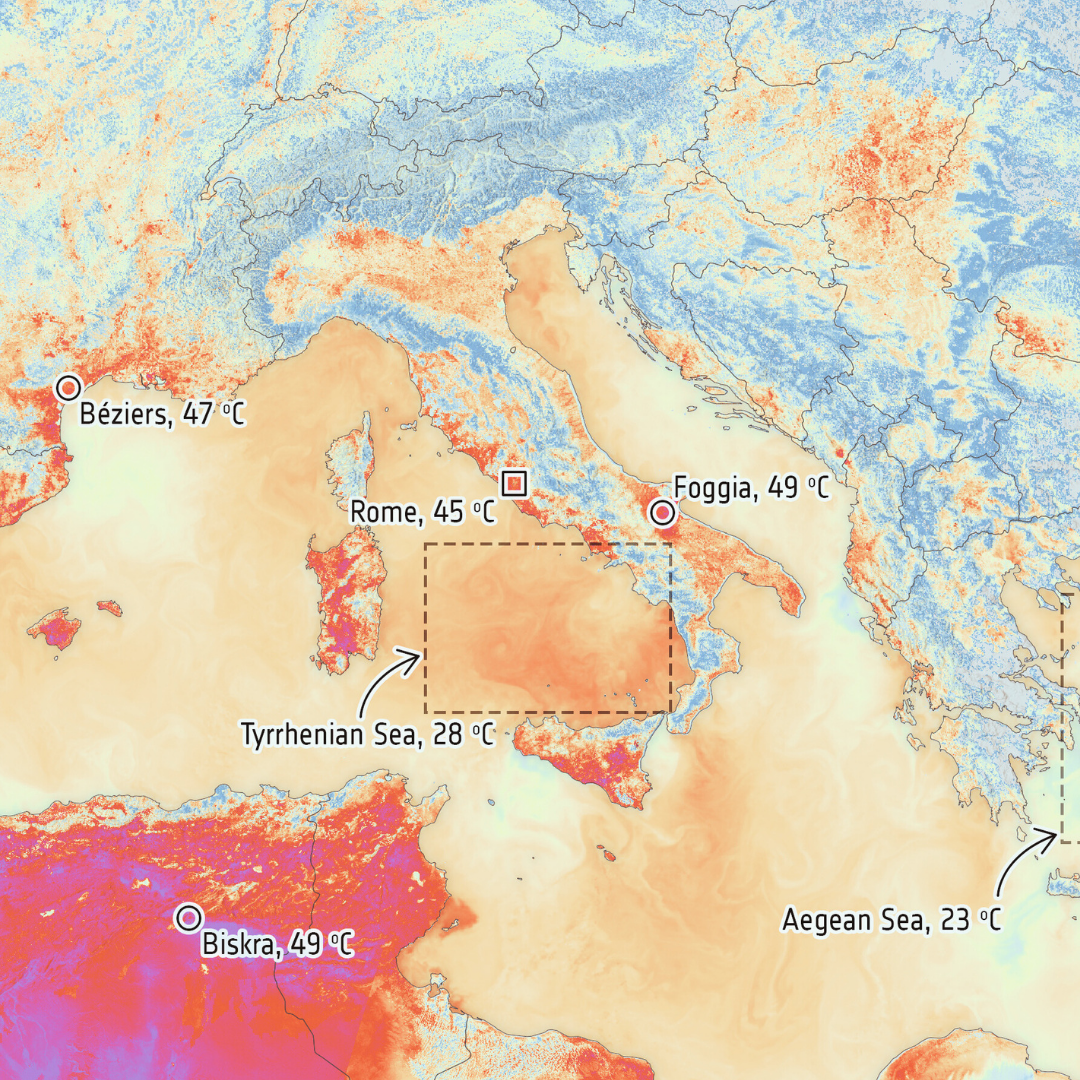Can we predict and plan for heatwaves?
Heatwaves cause devastating effects across Europe, including agricultural losses, energy usage spikes, health crises, and increased mortality. Recent deadly events in 2003, 2010, and 2022 highlight the urgent need for early warning systems that can help dampen the effects of heatwaves. This is particularly important as climate projections suggest further intensification of heatwaves in the coming decades, making accurate seasonal forecasting crucial for saving lives.

Image: Copernicus Sentinel-3 | European Space Agency
A new study, ‘Seasonal forecasting of European heatwaves using a feature selection framework’, published in Nature Communications Earth & Environment, showcases the Euro-Mediterranean Center on Climate Change’s (CMCC) leadership in integrating cutting-edge artificial intelligence with climate science to address one of Europe's most pressing climate challenges: heatwaves.
It demonstrates how machine learning (ML) and artificial intelligence (AI) techniques are revolutionising climate science by enabling more accurate, cost-effective predictions than traditional approaches. Furthermore, where conventional dynamical forecasting systems require massive computational resources and struggle with reliability in northern European regions, this data-driven approach offers an alternative.
The system employs an optimisation-based feature selection framework that identifies the optimal combination of atmospheric, oceanic, and land variables to predict heatwave likelihood across Europe. Using ML techniques, the approach analyses roughly 2,000 potential predictors to select the most predictive combinations for each geographic location.
The method not only matches, and in some cases outperforms, traditional forecast systems, but also provides information on which predictors were used in the process – a valuable scientific resource. The ability to pinpoint which atmospheric and oceanic predictors contribute most to forecast skill at different times and locations across Europe can inform future research into the physical mechanisms behind extreme heat events. For example, the research reveals that European soil moisture, temperature patterns and atmospheric circulation emerge as the most critical local predictors, while distant signals from the tropical Pacific and Atlantic also contribute to forecast skill.
A persistent challenge in seasonal forecasting has been poor performance over Scandinavia and northern-central Europe. In contrast, the new data-driven approach developed in the paper improves skill in these previously problematic areas.
One of the study's most innovative aspects involved training the ML system on paleoclimate simulations spanning years 0-1850, providing vastly more training data than available in observational records. Despite this unusual approach, the system successfully transferred its learning to accurately predict real-world heatwaves from 1993 to 2016.
The system offers not only increased efficiency, but also a dramatic reduction in computational requirements, making seasonal forecasting using this technique accessible to a broader range of researchers and institutions. While traditional dynamical systems require enormous supercomputing resources to run, this approach focuses specifically on heatwave prediction with minimal computational overhead.
By providing reliable seasonal forecasts of extreme heat months in advance, the system enables proactive measures to reduce heatwave effects on society and the economy. This opens new possibilities for climate services across sectors, including agriculture, public health, energy management and emergency planning, as well as creating an opportunity to combine ML approaches with the dynamical system produced by CMCC and therefore leverage the strengths of both approaches.
The framework also has the potential to be adapted for other extreme events, start dates and target seasons, representing a significant milestone in CMCC's mission to advance climate science through innovative methodologies and establish new standards for seasonal forecasting and climate risk assessment.
DOI: 10.1038/s43247-025-02863-4